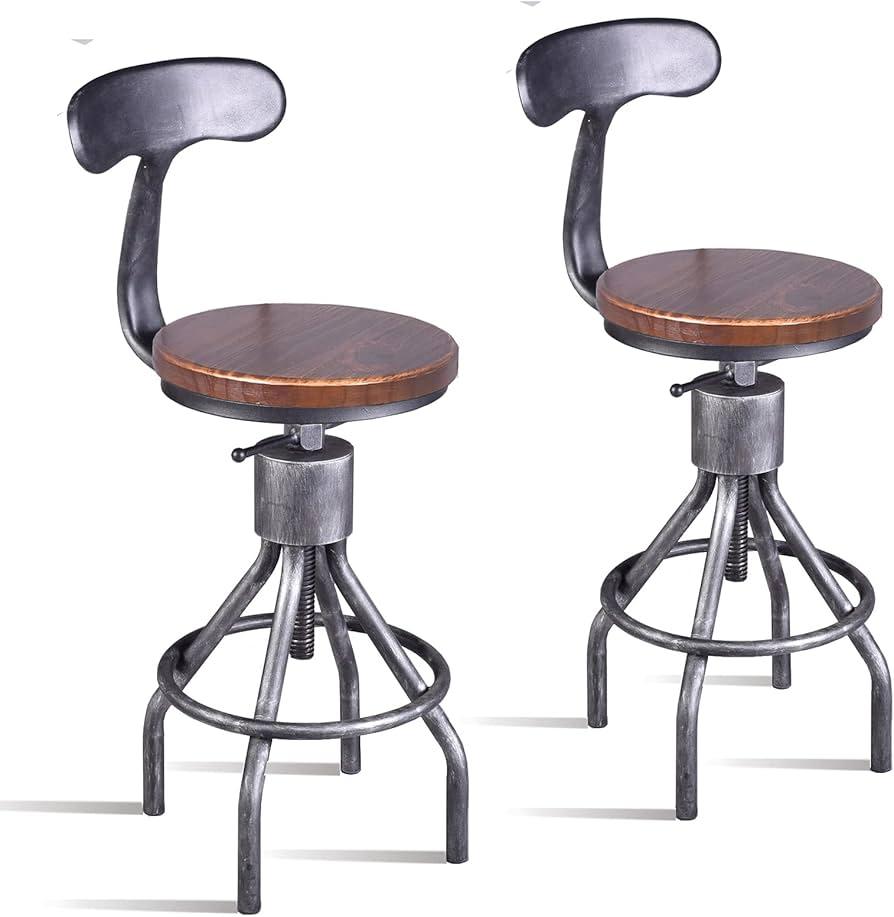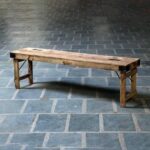In the realm of vintage kitchenware, few pieces evoke as much nostalgia as Blue Cornflower Corningware. With its delicate floral design and sturdy functionality, this iconic collection encapsulates a bygone era of home cooking and heartfelt gatherings. Originally introduced in the 1950s, Blue Cornflower not only adorned countless dining tables but also became a beloved staple in kitchens across America. As we delve into the history and enduring charm of this timeless cookware, we will explore its origins, design evolution, and the cultural significance it holds for collectors and culinary enthusiasts alike. Join us on a journey through the enchanting world of Blue Cornflower Corningware, where practicality meets artistry in a harmony that resonates through generations.
Exploring the Aesthetic Appeal of Blue Cornflower Corningware
When it comes to nostalgic kitchenware, few items evoke the charm of vintage Americana quite like blue cornflower Corningware. The unique floral pattern embodies a sense of warmth and home, making it a timeless choice for both functional cooking and decorative display. The soft hues of cornflower blue against the crisp white background radiate a tranquil aesthetic that effortlessly complements a variety of kitchen styles, from rustic farmhouse to chic modern. Collectors appreciate its ability to add a touch of elegance while also serving as a conversation starter, softly reminding us of simpler times spent around family meals.
In addition to its visual appeal, the blue cornflower design is notable for its practicality. Made from durable, oven-safe glass-ceramic, it showcases a blend of beauty and strength that has stood the test of time. The versatile dishes are suitable for a range of cooking methods, whether baking, microwaving, or broiling. For enthusiasts, the pieces often carry sentimental value, passed down through generations or discovered in thrift stores. Here’s a quick overview of the characteristics that elevate blue cornflower Corningware in the realm of collectibles:Vintage Clay Pottery
| Characteristic | Description |
|---|---|
| Design | Elegant blue cornflower pattern |
| Durability | Made of oven-safe glass-ceramic |
| Versatility | Suitable for baking, microwaving, and more |
| Sentimental Value | Often passed down through generations |
The Timeless Craftsmanship Behind Vintage Corningware
The Blue Cornflower pattern is more than just a nostalgic design; it embodies a rich history of meticulous craftsmanship that has made Corningware a staple in kitchens across generations. Each piece is a testament to the dedication and skill of artisans who understood the importance of durability and aesthetics. The strong, non-porous glass-ceramic material used in vintage Corningware ensures that each dish withstands temperature changes, making it perfect for cooking, serving, and storing food. This remarkable versatility has allowed these timeless pieces to seamlessly transition from oven to table, showcasing a degree of functionality that modern cookware often lacks.
Moreover, the beautifully detailed cornflower motif is a reflection of the era it represents, evoking memories of cozy family gatherings and cherished moments. Collectors and enthusiasts appreciate not just the visual appeal, but also the stories behind each piece. Key features that define the craftsmanship of vintage Corningware include:
- Hand-painted Designs: Each piece showcases unique artistry.
- Durable Material: Exceptional resistance to thermal shock.
- Timeless Aesthetic: Complements both modern and traditional decor.
- Practical Size Options: Available in various sizes for diverse culinary needs.
To illustrate the enduring popularity of the Blue Cornflower collection, consider the table below, highlighting some sought-after items among collectors:
| Item | Material | Approx. Value |
|---|---|---|
| 1. 1.5 Qt Casserole | Glass-Ceramic | $30 - $50 |
| 2. 2.5 Qt Baking Dish | Glass-Ceramic | $40 – $60 |
| 3. 4 Qt Dutch Oven | Glass-Ceramic | $70 - $100 |
Caring for Your Blue Cornflower Collection: Essential Tips
To keep your blue cornflower collection in pristine condition, it’s essential to pay attention to both storage and cleaning techniques. When storing your CorningWare pieces, always use a soft cloth or padding to separate each item, preventing any scratches or chips. Avoid stacking heavier items on top of lighter ones. Place your collection in a temperature-controlled environment, as significant temperature fluctuations can lead to damage. Additionally, maintain a dust-free atmosphere by using display cabinets with glass doors or investing in display cases that protect from dust while allowing visibility.
Cleansing your blue cornflower dishes properly is equally vital. Use a gentle dish soap and avoid abrasive cleaners that can scratch the surface. Hand washing is recommended; if you must use a dishwasher, select a gentle cycle and avoid high heat. For stubborn stains, create a paste of baking soda and water—this gentle scrub can safely eliminate marks without harming the pattern. Remember to steer clear of any cleaning tools that may harbor metal, as these can scratch the delicate glaze. Following these tips will ensure that your treasured collection remains vibrant and beautiful for years to come.
Where to Find Authentic Blue Cornflower Corningware
Finding genuine Blue Cornflower Corningware isn’t just about rummaging through thrift shops; it’s an adventure that can take you both online and offline. To kick-start your search, consider exploring antique shops and vintage markets, where seasoned collectors often gather. Additionally, estate sales and garage sales can be treasure troves for authentic pieces. Here are some reliable options to enhance your quest:
- Online Marketplaces: Websites like eBay and Etsy often have listings from various sellers, making it easy to compare prices and authenticity.
- Second-Hand Stores: Visit local second-hand shops that specialize in kitchenware or collectibles, as they occasionally stock rare finds.
- Collector Shows: Attend events specifically for kitchenware collectors. You may discover unique pieces while networking with other enthusiasts.
To better understand the varieties of Blue Cornflower Corningware, you can refer to a simple comparison table that outlines key styles and their features:
| Style | Size | Value Range |
|---|---|---|
| Round Casserole | 1.5 qt | $25 – $50 |
| Oval Baker | 2 qt | $30 – $60 |
| Serving Platter | 12 inch | $20 – $40 |
These locations and tips will guide you towards building a collection that celebrates the charm and tradition of Blue Cornflower Corningware, ensuring every piece is as authentic and cherished as the memories they hold.
A Comprehensive Guide to Blue Cornflower Value and Rarity
The Blue Cornflower pattern in Corningware vintage collections is not only visually stunning but also holds significant value for collectors and enthusiasts alike. This unique design features vibrant blue blooms that grace various pieces, evoking a sense of nostalgia reminiscent of simpler times. Factors influencing the value and rarity of these items include condition, age, and availability. Often, items in mint condition with their original labels fetch a higher price, particularly if they feature the rarest variations of the design. Furthermore, pieces from the earliest production runs tend to be more sought after due to their limited availability.
As collectors delve into the world of Blue Cornflower Corningware, they often turn to guides and databases to assist in understanding market fluctuations. Key aspects to consider include:
- Market Demand: The popularity of the design can spike due to trends in vintage decor, affecting pricing.
- Item Types: Serveware tends to have a higher value than smaller items like mugs or dishes.
- Historical Significance: Items linked to significant events or unique stories can surpass standard pricing.
| Item Type | Average Value | Rarity Level |
|---|---|---|
| 9″ Pie Plate | $25 | Common |
| 1.5 Quart Casserole | $45 | Uncommon |
| 1.0 Quart Covered Casserole | $75 | Rare |
| 2.5 Quart Oval Baker | $100 | Very Rare |
Styling with Blue Cornflower: Incorporating Vintage Charm into Modern Spaces
Transforming modern spaces with the timeless elegance of blue cornflower designs can create an inviting atmosphere filled with nostalgia. Incorporating pieces such as Blue Cornflower Corningware into your decor not only showcases their vintage charm but also adds a pop of color that complements various design aesthetics. Consider the following ways to style your space:
- Mix with Modern Elements: Pair your blue cornflower pieces with contemporary furnishings. A sleek glass table displaying vintage dishes juxtaposes old and new beautifully.
- Layer Textures: Utilize textiles in coordinating colors, such as soft gray or crisp white, to let the blue cornflower designs stand out.
- Create a Focal Point: Use a large blue cornflower casserole as a centerpiece on the dining table, surrounded by matching linens for an effortless vintage vibe.
Integrating these charming pieces into your home can inspire a heartwarming sense of comfort and familiarity. To further enrich this vintage-modern fusion, consider organizing an open shelf display that highlights your collection.
| Styling Tips | Examples |
|---|---|
| Accent Colors | Soft Whites, Grays, Natural Woods |
| Textiles | Cotton, Linen, Vintage Patterns |
| Display Styles | Shelves, Tables, Sideboards |
Q&A
Q&A: All About Blue Cornflower Corningware Vintage
Q: What exactly is Blue Cornflower Corningware?
A: Blue Cornflower Corningware is a line of iconic bakeware produced by Corning, known for its durability, versatility, and elegant design featuring a blue cornflower pattern. Launched in the 1970s, this collection became a staple in kitchens across America, favored for both its aesthetic appeal and its ability to withstand extreme temperatures.
Q: Why is Blue Cornflower Corningware considered vintage?
A: The term “vintage” refers to items that are no longer in production and evoke a sense of nostalgia. Blue Cornflower Corningware was manufactured until the late 1980s, and its charming design, along with its historical significance in American culinary culture, makes it a sought-after collectible today.
Q: What are the most popular pieces from the Blue Cornflower collection?
A: Some of the most beloved pieces include the casserole dishes, baking pans, and serving bowls. Particularly, the 1.5-quart and 2.5-quart casserole dishes tend to be fan favorites, cherished for their practical size and stylish look. Sets or coordinated pieces are also highly sought after by collectors.
Q: How can I identify authentic Blue Cornflower Corningware?
A: Authentic Blue Cornflower Corningware features a distinctive blue cornflower design, typically stamped on the bottom with the Corning logo. Look for pieces with the “Corning Ware” and “Pyroceram” markings; they also should have a smooth finish and certain weight indicative of quality craftsmanship.
Q: Are there any special care tips for preserving vintage Blue Cornflower Corningware?
A: Yes! To keep your vintage pieces in top condition, avoid sudden temperature changes that could lead to thermal shock. Clean with mild dish soap and avoid abrasive scrubbers. While many wonder if vintage Pyroceram is microwave safe, it’s always best to check for specific markings or instructions.
Q: What is the current market value of Blue Cornflower Corningware?
A: The market value for Blue Cornflower Corningware varies depending on the item’s condition, rarity, and demand. Pieces can range from $10 to over $100 for particularly rare items or complete sets. Collectors often frequent flea markets, estate sales, and online marketplaces to find deals.
Q: How does Blue Cornflower Corningware compare to modern bakeware?
A: While modern bakeware offers a wide array of materials and designs, Blue Cornflower Corningware stands out for its vintage charm, nostalgia, and resilience. Its timelessness and functionality ensure it still holds a place in contemporary kitchens, blending seamlessly with both retro and modern aesthetics.
Q: Can Blue Cornflower Corningware be used for cooking or baking?
A: Absolutely! Blue Cornflower Corningware is designed to be oven-safe and can be used for baking, roasting, and microwaving. Its ability to retain heat makes it ideal for serving hot dishes directly from the oven to the table, a perfect blend of style and practicality.
This Q&A provides insights into the allure of Blue Cornflower Corningware, celebrating its vintage status and ongoing relevance in culinary practices. Whether you’re a collector or a cooking enthusiast, these charming pieces are sure to bring warmth and heritage into your kitchen.
Concluding Remarks
As we close our exploration of Blue Cornflower Corningware vintage, it’s clear that this iconic design transcends mere functionality, embodying a rich tapestry of nostalgia and craftsmanship. Each piece serves as a testament to a time when domesticity was cherished and home-cooked meals brought families together. Whether you stumbled upon a cherished heirloom in the attic or are on the hunt for the perfect addition to your kitchen, the allure of Blue Cornflower remains undeniable. It invites us not only to celebrate its aesthetic beauty but also to reflect on the enduring legacy of quality and style that this vintage cookware represents. As you incorporate these timeless pieces into your culinary adventures, may they inspire warmth, creativity, and a sense of history that enriches your dining experience.


